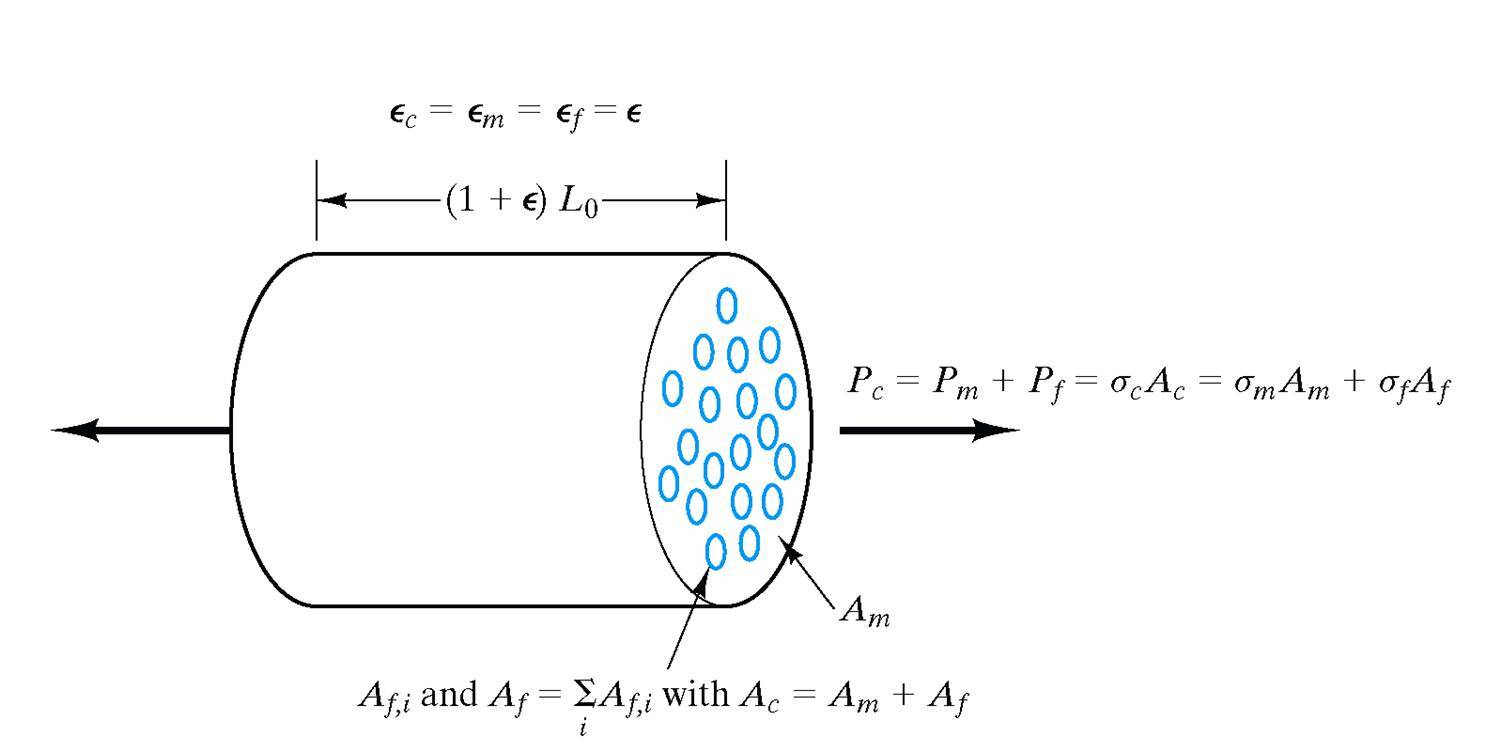Property Averaging for the Case of Isostrain
The
properties of a composite must, in some way, represent an average of
the properties of their individual components. The precise
nature of the "average" is a sensitive function of the microstructural
geometry.
Calculating Young's Modulus for a Composite Material Under Isostrain
We
will look at a specific case of calculating the modulus of elasticity
for a composite material with continuous aligned
fibers parallel to the loading. This specific case is called isostrain since the strain of the fibers and the matrix is the same:
ec = em = ef = e
This of course assumes that the
matrix is intimately bonded with the fibers.

The load that the composite carries is the sum of the load on the fibers and the load on the matrix:
Pc = Pm + Pf
Substitute an expression for the load, P, using the stress (P = sA):
scAc = smAm + sfAf
Now substitute an expression for the stress, s, using the strain and Young's modulus (s = eE):
ecEcAc = emEmAm + efEfAf
And since ec = em = ef = e we have:
eEcAc = eEmAm + eEfAf
Cancelling out the e and solving for Ec gives:
Ec = (Am/Ac) Em + (Af /Ac)Ef
If Vm & Vf are volume fractions of matrix and fibers respectively, we finally have our answer:
Ec = VmEm + VfEf
So
we see that for this case of isostrain conditions, the composite
modulus, Ec, is simply the weighted average of the moduli of the
components.
Calculating Other Properties for a Composite Material Under Isostrain
Although the above derivation was for Young's modulus, the relationship we obtained holds for many material properties.
In general for isostrain conditions:
Xc = VmXm + VfXf
where X is:
- E, Young’s modulus
- D, diffusivity
- k, thermal conductivity
- sigma, electrical conductivity
- nu, poisson’s ratio
Calculating Fraction of Load Carried by Fibers Under Isostrain
Let’s also examine the total fraction of the load carried by the fibers:
Pf /Pc = sfAf/scAc
Pf /Pc = eEfAf / eEcAc
Pf /Pc = (Af/ Ac )(Ef/ Ec)
Pf /Pc = Vf (Ef / Ec)
Since Ef >> Ec this can be very effective. It means that the high strength fibers will carry most of the load. For
some fiberglass, the fibers can carry ~96% of the load! The ductile
matrix make this a less brittle material. Hence we get the “best
of both worlds”: strength and ductility!
